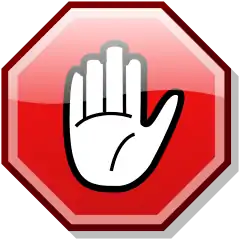3e SRD:Weapon Qualities
Weapon Qualities
Cost
This is the weapon's cost in gold pieces (gp) or silver pieces (sp). The cost includes miscellaneous gear that goes with the weapon, such as a scabbard for a sword or a quiver for arrows.
Damage
The Damage column gives the damage dealt with a weapon when a hit is scored. If the damage is designated "S", then the weapon deals subdual damage rather than normal damage. If two damage ranges are given, then the weapon is a double weapon, and the full attack full-round action can be used to make one extra attack when using this weapon, as per the two-weapon rules. Use the second damage figure given for the extra attack.
As a weapon gets larger or smaller, the damage it deals changes according to the following progression:
| One Size Smaller | Original Damage | One Size Larger |
|---|---|---|
| 1 | 1d2 | 1d3 |
| 1d2 | 1d3 | 1d4 |
| 1d3 | 1d4 | 1d6 |
| 1d4 | 1d6 | 1d8 |
| 1d6 | 1d8 | 2d6 |
| 1d6 | 1d10 | 2d6 |
| 1d8 | 1d12 | 2d8 |
For an even larger version of a weapon that does 2 or more dice of damage, convert each die to the next larger category. For instance, a Large version of a longsword does 2d6 points of damage (up from 1d8), and a Huge version of a longsword does 2d8 points of damage (increasing each d6 to a d8).
A weapon reduced in size so that it does less than 1 point of damage is useless.
Critical
The entry in this column notes how the weapon is used with the rules for critical hits. When a critical hit is scored, roll the damage with all modifiers two, three, or four times, as indicated by its critical multiplier, and add all the results together.
Exception: Bonus damage represented as extra dice, such as from a sneak attack or a flaming sword, is not multiplied when a critical hit is scored.
- ×2: The weapon deals double damage on a critical hit.
- ×3: The weapon deals triple damage on a critical hit.
- ×3/×4: One head of this double weapon deals triple damage on a critical hit. The other head deals quadruple damage on a critical hit.
- ×4: The weapon deals quadruple damage on a critical hit.
- 19–20/×2: The weapon scores a threat on a natural roll of 19 or 20 and deals double damage on a critical hit.
- 18–20/×2: The weapon scores a threat on a natural roll of 18, 19, or 20 and deals double damage on a critical hit.
Range Increment
Any attack at less than this distance is not penalized for range. However, each full range increment causes a cumulative -2 penalty to the attack roll.
Thrown weapons, such as throwing axes, have a maximum range of five range increments. Projectile weapons, such as bows, can shoot up to ten increments.
Improvised Thrown Weapons
Sometimes objects not crafted to be weapons get thrown. Because they are not designed for this use, all characters who use improvised thrown weapons are treated as not proficient with them and suffer a -4 penalty on their attack rolls. Improvised thrown weapons have a range increment of 10 feet. Their size and the damage they deal have to be adjudicated by the DM.
Weight
This column gives the weapon's weight.
Type
Weapons are classified according to types: bludgeoning, piercing, and slashing. If a weapon is of two types, a creature would have to be immune to both types of damage to have damage dealt by this weapon be ignored.
Special
Some weapons have special features, such as reach. See the weapon descriptions.
Back to Main Page → 3e Open Game Content → System Reference Document → Equipment → Weapons

